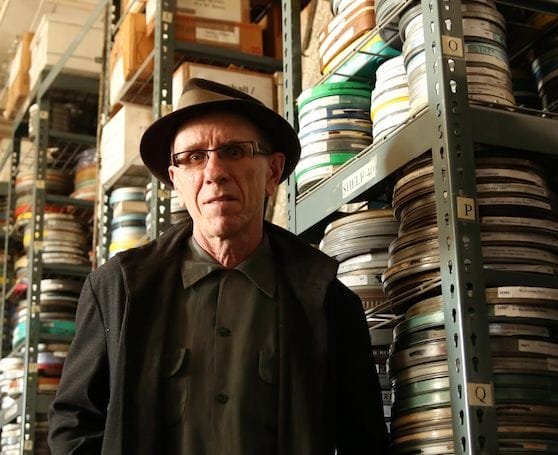
Stephen Parr’s collection of archival cultural and historical films is so extensive that people sometimes call to ask whether he has footage of the Civil War.
“My answer to that is always, ‘Do you want that in black and white or color?'” he says.
When the confused caller points out that filmmakers probably didn’t have color back then, Parr points out they didn’t have black and white either.
We’re chatting in Parr’s office at Oddball Film in San Francisco. Jazz bops in the background and small altars pay homage to Indian spiritual teachers in the nooks of the vast room. Had someone somehow captured footage of the shots at Fort Sumter, filmmakers know it might be among the 60,000 titles Parr keeps under his care at Oddball.
Ceiling-high shelves brim with film canisters, tapes, vintage movie posters and editing equipment. Oddball’s staff work quietly, locating, cutting and scanning rare and often bizarre footage. As a business, Oddball collects rare or unseen footage, typically at a low price from families or organizations clearing out the basement or the archives, and then re-licenses that footage when a director needs a unique and specialized shot for a film.
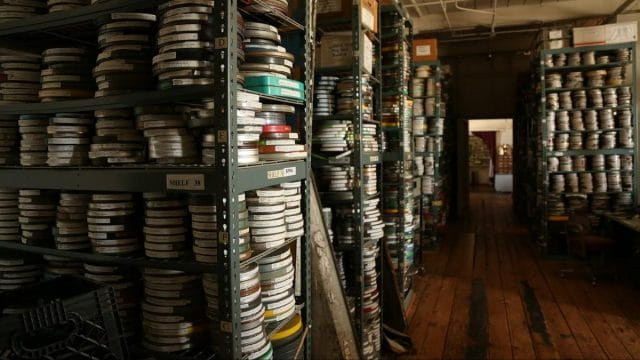
All photos by Caleb Garling
The recent Jobs movie used clips of a random mid-90s technology TV show from Oddball’s archives. Zodiac, David Fincher’s 2007 film about the killer who terrorized San Francisco in the 1970s, used Oddball footage of the city. Spike Lee incorporated Oddball’s footage into A Huey P. Newton Story, which is about the leader of the Black Panthers.
But Oddball doesn’t just work with moviemakers. Recently, Jimmy Kimmel Live licensed footage of giraffes having sex.
“It’s impossible to catalog everything we have,” Parr says. “You really have to be something of a media archaeologist to find these things.”
In The Digital Age
In less than one second, “Giraffes mating” returns about 60,700 results on YouTube. Everyone has a camera these days, and filmmakers who need a clip of giraffes getting busy could just contact YouTube channel owners. Digital abundance undercuts offline businesses like Oddball in the same way that Creative Commons photographs cut the total pool of paid photography work and that search engines reduce the need for librarians.
The human element for film search is what, Parr believes, keeps Oddball in business. Oddball doesn’t source from YouTube. Instead Parr and his staff of three — all trained in some aspect of film — dive into their own database and archives for the right footage. He sees his team as consultants. Placing these kinds of clips is not as simple as combing YouTube results, he says, and “No one who is really serious, in my mind, has the time to search online through random searches.”
“People think they know what they want, but a lot of time they don’t,” he says.
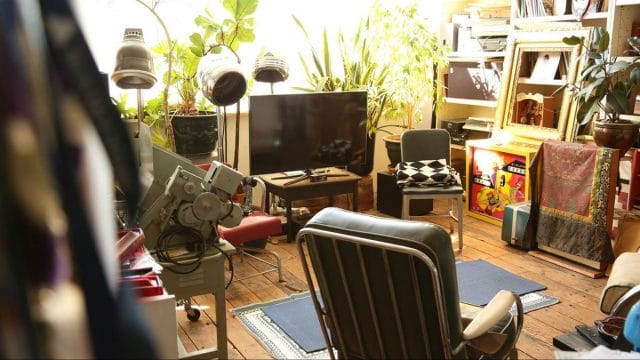
Oddball also owns the rights to their film (or sometimes sources from someone who does) and knows how to execute licensing agreements. If they need real legal frameworks for a film, a producer probably doesn’t want to deal with a random person who got lucky with their camera phone. They want to deal with a company. Depending on whether the client wants to show the clip in perpetuity, like a film, which is more expensive, or for a short period, like a year, an arrangement typically known as “festival rights”, Oddball can charge between $300 and $3,000 per second of footage.
“There’s two ways to do business: High price, low volume. And low price, high volume. People call us because we’ll send them materials they’re not going to find anywhere else,” Parr says. Oddball is a high price, low volume business, and Parr notes that at any given time, clients and filmmakers are licensing about twenty percent of Oddball’s total collection.
A producer, director or (usually) staff member working on a film, TV show or documentary may request something like German blimps (3,710 YouTube hits). That’s a fairly concrete concept and, Parr says, not too hard to dig up. But a client may ask for something abstract like the concept of power. Parr and his “film think tank”, as he styles Oddball, spend hours finding a moment or piece of imagery that fits the bill. Filmmakers then go back and forth on whether they want to use a clip at all, try other footage, perhaps test whether to use the shot full screen or on a television screen in a bigger shot, and so on.
All that work typically goes into very short clips. Recently Oddball spent over two months working on a two second clip for an upcoming film with Ryan Gosling.
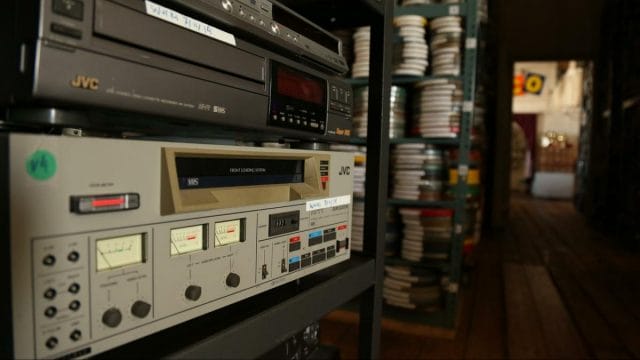
Psychedelic Origins
One of Parr’s first major breaks came from Ridley Scott.
Parr had moved to San Francisco from New York in 1979, opened a nightclub called Club Generic in the Tenderloin and would splice together film montages for other clubs around town. He had used tools like lasers and holography and worked at the Experimental Television Center in New York, where video artists like Nam June Paik had become one of his biggest influences. Parr had been focusing on avant-garde film without narrative structure, those with strange permutations of time and bizarre or psychedelic imagery. For one piece, he set cards of naked people on turntables and filmed them together rotating at different speeds.
Scott, the director of Alien and Blade Runner, was filming a project in San Francisco and spotted some crazy visualizations Parr had created on a screen at a dance club. He paid for some of the footage.
“That’s where I realized very quickly that I could begin an archive of material, make that available to other producers and use the material to build my own work [as a filmmaker],” Parr says.

Parr started slowly building his business. (He didn’t hire his first staff member until about 1990.) He would search around for crazy, strange and interesting footage, buy it, gain the rights to it, and then licence that content to moviemakers. He sought film that families, universities, or organizations had found in the attic or the library and were selling or tossing in a dumpster. Parr doesn’t take everything. He focuses on footage he believes really captures a piece of history — in one way or another.
Lifestyle moments, like a family at the beach. News outtakes. Educational films. Behind the scenes shots. Commercials. Old tourism bureau films. Movie trailers. Industrial films. Medical films. Military filmes. And “orphan” films, those without owners, and “bastard” films, those where it’s unclear why the film was made at all.
“I’m interested in the kinds of films that create a cultural collision when used in a project, not the standard conventional B-roll,” he says. (B-roll is supporting shots in documentaries and films.) “Things that are behind the scenes, someone talking when they think the microphone is off, something that says much more than a script could.”
Analog Archivist
While a filmmaker might be able to crowdsource feedback on a clip by scanning the (non-asinine) YouTube comments to get a sense of the film quality and content, Oddball staffers need to view, label and store most everything themselves. Startups like Dextro are trying to use machine learning techniques to scan film for language, themes and imagery so humans don’t have to watch the footage. But, at least for now, such tools aren’t in use.
Those long hours are worth it when the Oddball staff uncovers a gem. One film simply labeled “Band marquee” turned out to be old footage of concerts at the Fillmore West. Another labeled “Love Collection” turned out to be a Janis Joplin concert in San Francisco’s Panhandle (a small park next to Golden Gate Park) in protest of LSD becoming illegal that day. Once Parr bought a film from a homeless person called 17 Inch Baton. He thought it was an adult film. It turned out to be a police training video from the 70s.
“You can never tell what’s on something,” he says.
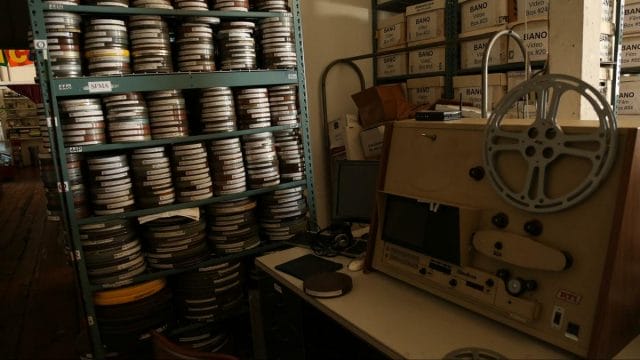
Parr also has to convince people not to throw stuff away. Attics and library archives still teem with old footage and when someone stumbles across it, they rarely think, “Hey I should check whether this would make great supporting footage in a documentary.” It goes to the trash. Parr has called trucks to universities on a day’s notice just to keep them from putting film in a dumpster. Once someone wanted to sell Parr a clip of civil rights leader Harvey Milk and San Francisco Mayor Moscone together.
“It was a quick shot and I won’t tell you how much I paid for it,” he says. “But I knew he’d throw it away if I didn’t.”
Oddball worked on a couple documentaries about Iggy Pop, but not for concert footage. Artists and labels typically have plenty of that. These filmmakers employed Oddball for all the backstage B-roll or even footage of where an artist grew up, which they played over interviews to give their story more context. Oddball supplied footage for the documentary A Band Called Death, the almost forgotten story of a three-brother black punk band in 1970s Detroit, because the filmmakers needed footage of the city to supplement the scant footage of the band.
That doesn’t mean Oddball always knows the plot or the clip’s context. Sometimes filmmakers are secretive. Oddball worked with Alex Gibney on Going Clear, a film on Scientology based on a book by Lawrence Wright. But because of Scientology’s litigious nature, Gibney’s team shared almost no details with Parr, saying that they needed some footage for an untitled religious documentary.
“It was only when I saw the film in the theater that I knew it was being used,” he says.
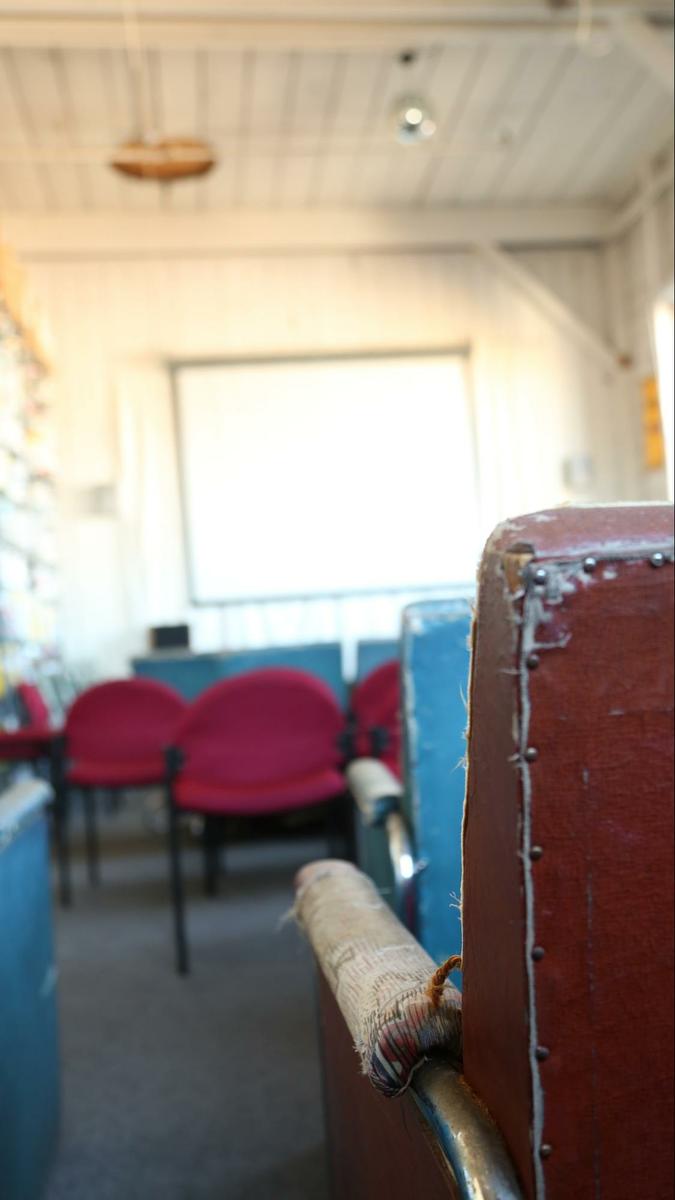
Parr believes Oddball bridges an important gap between culture and capitalism. He likens culture to a set of shelves, with only so much room. Oddball is a for-profit company, but its work preserves an aspect of culture that otherwise would not have a place on the shelf. Each weekend, Oddball puts on a film series in San Francisco’s Mission district. A cheap ticket buys a mini-wormhole into topics like Hobo Graffiti Artists, Altered States, Ambrose Bierce Ghost Stories and Vintage London.
“That’s the main reason why I’m putting this together,” Parr says. “So they’ll be a resource for images that would be forgotten, set aside or ignored.”
“Some films are really absurdist,” he says. “Why would someone make a film just of people’s feet?”
(Over 210,000 results on YouTube.)
![]()
Our next post investigates the world of for-profit snuggling.
To get notified when we post it → join our email list.
![]()
This post was written by Caleb Garling. You can follow him on Twitter at @calebgarling.



